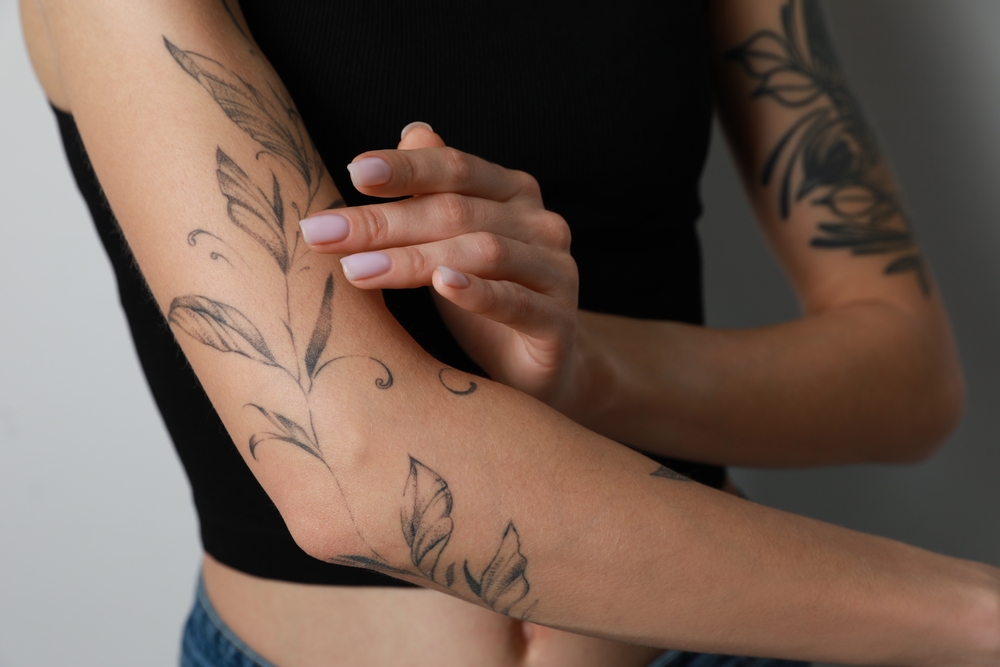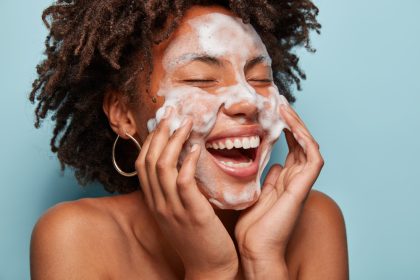Preserving body art requires diligence, especially when it comes to sun protection. With proper care, your personal expression can maintain its vibrant appearance for years to come.
The science behind tattoo preservation
Understanding sun exposure risks
Tattoo ink sits beneath the epidermis in the dermis layer of skin, but ultraviolet radiation still penetrates deeply enough to break down pigments over time. This degradation process occurs gradually, but its effects become increasingly noticeable—colors lose vibrancy, lines blur, and once-sharp details soften into indistinct shapes.
The degradation happens regardless of ink color, though certain pigments show damage more readily. What begins as a minor fading can progress to significant distortion of the original design, compromising both the artistic integrity and personal significance of your body art.
When tattoos face their greatest vulnerability
The critical healing period
Fresh tattoos represent a substantial investment—both financially and emotionally—yet they enter the world in their most vulnerable state. During the initial healing phase, which typically spans two to three weeks, tattooed skin essentially functions as a healing wound, with compromised protective barriers.
During this period, exposure to direct sunlight can cause immediate and sometimes permanent damage. The irritated skin burns more readily than intact skin, potentially leading to blistering that disrupts the healing process. This disruption can result in uneven healing, patchy color distribution, or even scarring that permanently alters the appearance of the design.
Color considerations in tattoo preservation
The vulnerability spectrum
While all tattoos benefit from sun protection, pieces featuring lighter colors require particular vigilance. Yellows, light blues, pinks, and whites tend to fade more rapidly than black, dark blue, or deep red pigments when subjected to ultraviolet exposure.
This vulnerability stems from the molecular structure of lighter pigments, which break down more readily under ultraviolet radiation. The result is accelerated fading that can leave multi-colored pieces looking unbalanced, with some elements maintaining their definition while others recede into obscurity.
Strategic protection protocols
Effective sunscreen application
Broad-spectrum sunscreen serves as the primary defense for established tattoos. Protection requires a minimum SPF of 30, though many dermatologists recommend SPF 50 for tattooed areas. The product should shield against both UVA rays (which penetrate deeply into the skin) and UVB rays (which cause sunburn).
For healed tattoos, apply sunscreen 15 minutes before sun exposure and reapply every two hours—more frequently when swimming or perspiring heavily. Fresh tattoos, however, should never have sunscreen applied directly until fully healed, as chemical ingredients may interfere with the healing process or trigger irritation.
Physical barriers and coverage
Strategic clothing choices provide reliable protection without chemical application. Lightweight, tightly-woven fabrics that cover tattooed areas represent the most consistent defense against ultraviolet damage. During the initial healing period, loose-fitting garments prevent friction against sensitive skin while still providing necessary coverage.
Some outdoor enthusiasts and tattoo collectors invest in specialized sun-protective clothing with UPF (Ultraviolet Protection Factor) ratings, which indicates the fraction of UV radiation that penetrates the fabric.
Seasonal considerations in tattoo care
Timing your ink sessions
Scheduling tattoo appointments during winter months provides practical advantages for preservation. Reduced sun exposure during colder seasons allows the healing process to proceed without constant vigilance against ultraviolet damage. Additionally, multiple layers of seasonal clothing naturally provide the coverage necessary during the vulnerable healing phase.
However, winter conditions introduce different challenges, particularly decreased humidity that can lead to skin dryness. This environmental factor necessitates consistent moisturizing to maintain skin health and tattoo appearance.
Hydration strategies
Maintaining skin hydration supports tattoo vibrancy through every season. Proper internal hydration through adequate water consumption helps skin maintain its natural protective functions. Externally, fragrance-free moisturizers help preserve skin elasticity and prevent the dry, flaky appearance that can make tattoos appear dull.
Limiting exposure to hot water, particularly in showers and baths, helps prevent stripping natural oils from the skin. Similarly, avoiding harsh soaps and cleansers that disturb the skin’s pH balance contributes to overall skin health and tattoo preservation.
Long-term vigilance
Monitoring tattoo appearance
Regular assessment of tattoo appearance serves as an early warning system for potential issues. Changes in color distribution, blurring of lines, or unusual texture changes may indicate sun damage or other problems requiring professional attention.
Establishing a routine examination process—perhaps monthly or seasonally—creates opportunities to address minor changes before they develop into significant alterations. Photographic documentation can help track subtle changes that might otherwise go unnoticed.
The preservation mindset
Tattoo protection represents an ongoing commitment rather than a one-time consideration. By integrating sun protection into regular skincare routines, tattoo enthusiasts can significantly extend the visual lifespan of their body art. The investment in proper protection preserves not just the aesthetic qualities of the tattoos but also the personal meanings and memories they represent.
With consistent attention to these protective measures, tattoos can maintain their definition and vibrancy for decades, continuing to serve as meaningful expressions of identity, memory, and artistic appreciation throughout life’s journey.












